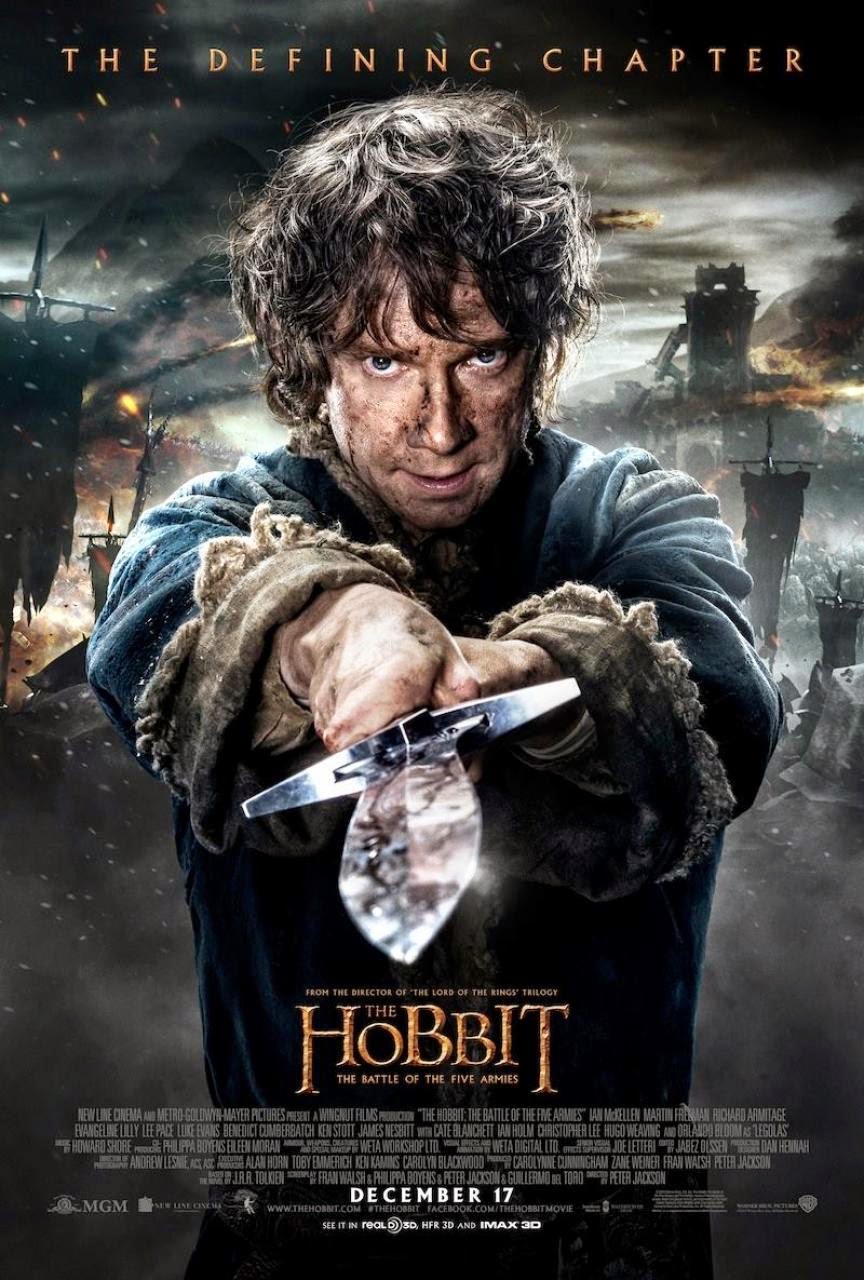As the dust settles, however, as with all vacuum's created by a dictator or powerful ruler, various parties sniff the possibility of wealth and position left by the death of Smaug. Thorin's greed and stubborn pride lead him to reject any sharing of the dragon gold and he is beseiged as armies of men, elves, dwarves and goblins gather and align themselves into factions to fight for the title of King under the Mountain.
The final battle sees the return of characters featured earlier in the book, including the Eagles and Beorn, and is not without its main character casualties, which I was not expecting.
Once the battle is over, Bilbo returns via Rivendell to Hobbiton. On the stop over, he hears about Gandalf's council with the other white wizards and their driving out of the Necromancer from Mirkwood.
It's interesting on completion of the novel to think that Tolkien had no plans to follow this up at the time with Lord of the Rings, but the reader has the added insight into how important the magic ring is to become and the ghost of an idea that the Necromancer could be Sauron.
Altogether the last seven chapters in my version of the Hobbit covered about 70 pages and does not go into much detail about the battle or Bilbo's return journey, I am guessing that the film will elaborate on a lot of this and build a path, much like the second trilogy did for Star Wars, to the set up for Fellowship of the Ring.
Official site
Whether you are a fan of Tolkein or just enjoy good movies, Battle of the Five Armies fails, for me, on both counts.
The main cardinal sin from the point of view of fans, is probably the inclusion of a love story between a female elf and a male dwarf. Of course, it was doomed from the start if you know the book, so what was the point? The need to conform to standard Hollywood requirements by crowbarring a love story into what was originally a children's story was never going to sit well. They got away with it (just) in Lord of the Rings with Aragorn and Arwen but just repeating the formula doesn't work here.
I say originally a children's story, as Peter Jackson has taken all the magic and wonder out by the third film and filled it with over an hour of relentless fighting, blood letting and beheading to stretch out the final battle to fill three hours of screen time.
In the book, the deaths of the dwarves are dealt with almost as asides. The film wants to give them a true heroes end, however, so we have cliched over-long one on one fights - it would have been refreshing to have seen brain win over brawn with the death of Azog as a result of weight ratio distribution. Instead we have Legolas, who we know survives, in a "perilous" fight which involves slow-mo walking up falling CGI bricks and Bard speeding down a slope in a cart to spear a troll threatening his family.
I think audiences have become bored of battles involving so many moving miniature paintings - we know its not real and the spectacle is less as a result. The film is definitely a product of our times and the message of wealth and avarice not solving problems but being the cause of disputes and injustice is laboured to wag the finger at banks and their financial mismanagement. Some would say this was a bit hippocritical of a film company that stretched out a small children's book into a nearly 9 hour trilogy for extra box office and DVD takings and perhaps New Line should have taken the film's moral to heart.
The story does deliver on linking up the mythology, however. There is an exciting fight between the nine wraiths, Elrond and Saruman which ends in Galadriel turning moody and banishing the Necromancer / Sauron to shapeless form and transporting him to Mordor.
Despite the running time, little is given to Bilbo's return journey or any resolution of outcome to the armies following the battle but perhaps that is for the inevitable six hour extended edition, which will be about as exciting as watching the paint dry on a world of warcraft figurine.


No comments:
Post a Comment
Feel free to add your own views and reviews here: